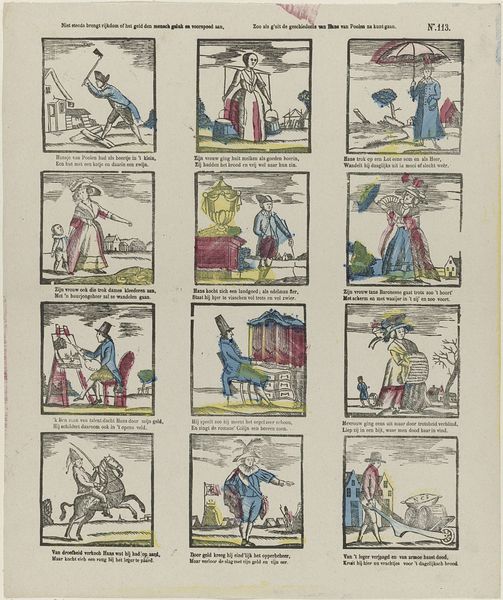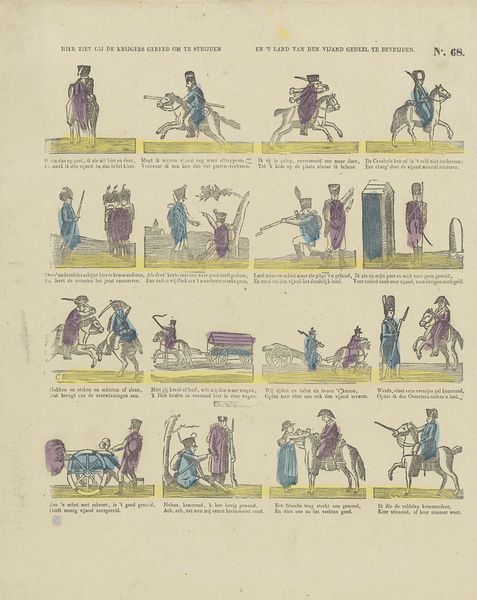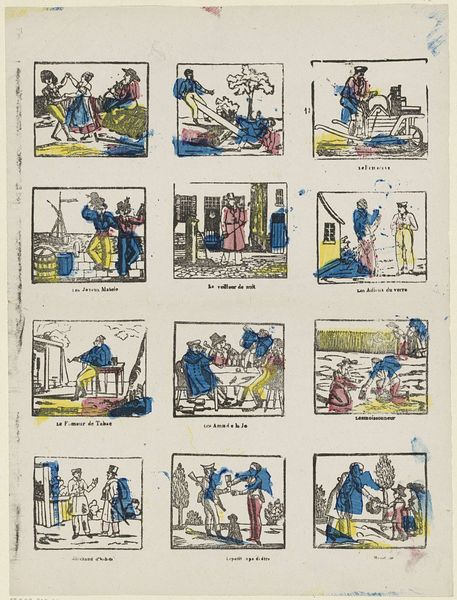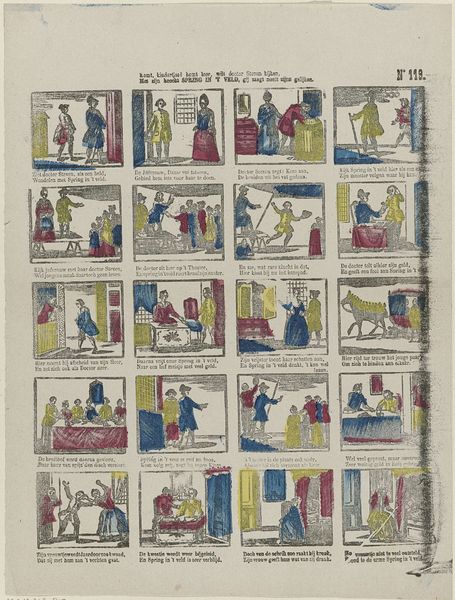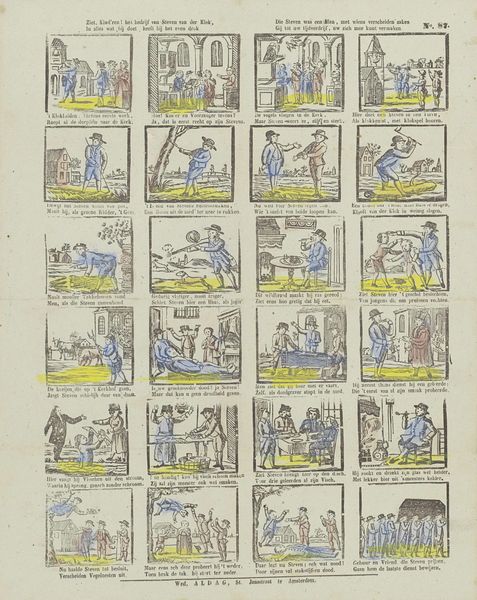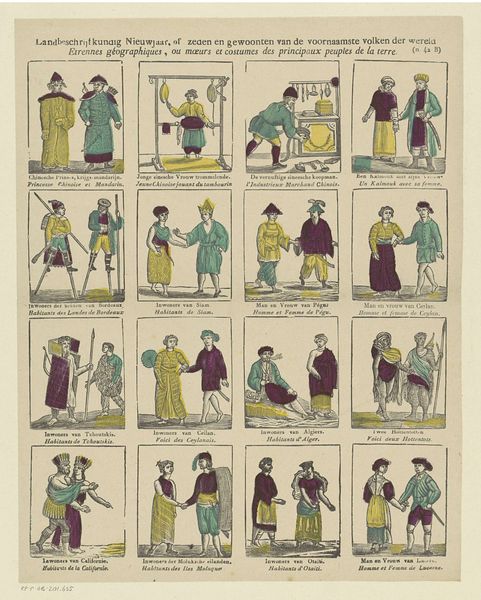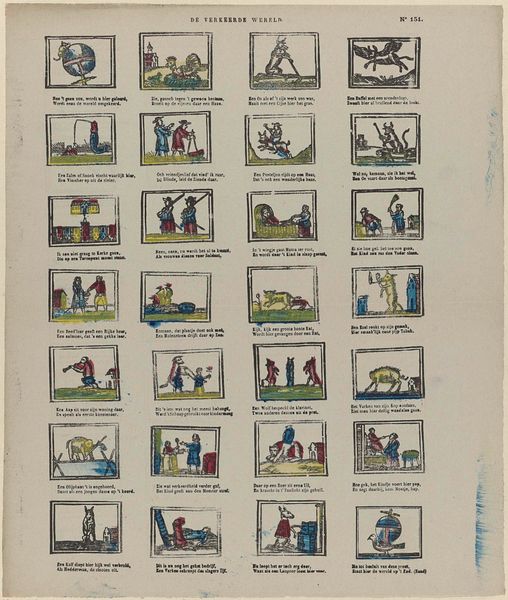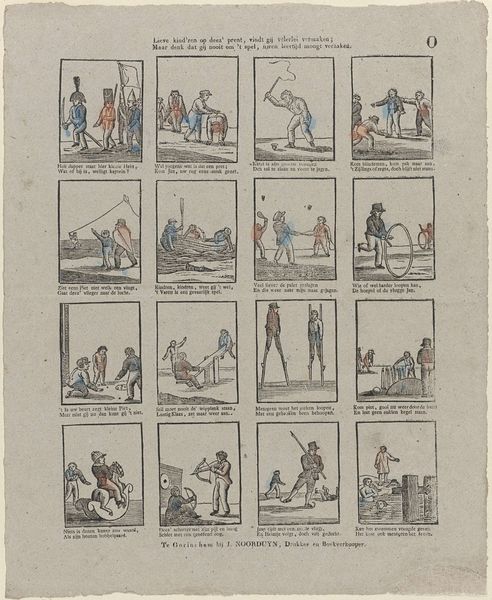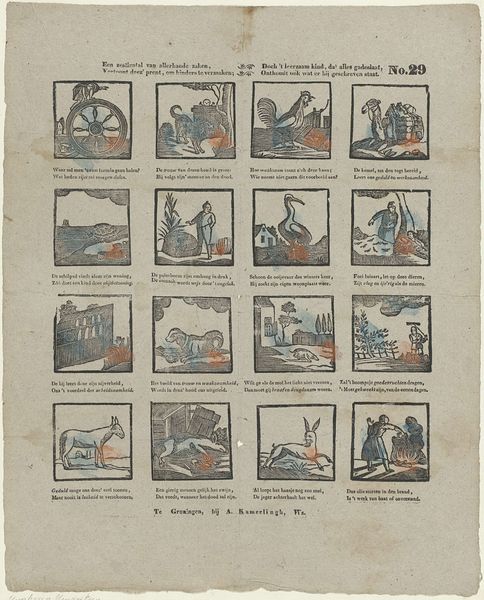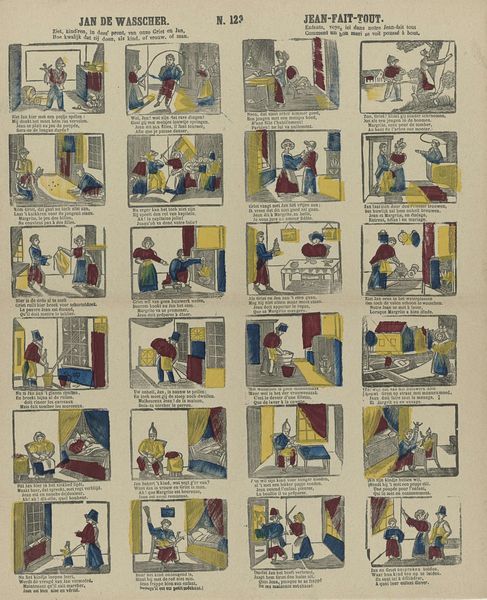
graphic-art, print
#
graphic-art
#
comic strip sketch
#
narrative-art
#
dutch-golden-age
# print
#
comic
#
genre-painting
Dimensions: height 398 mm, width 320 mm
Copyright: Rijks Museum: Open Domain
Editor: This is "Het nieuw vermakelijk luilekkerland" which translates to "The New Delightful Lazy Land", created between 1850 and 1870 by P.C.L. van Staden & Co. It’s a print, a kind of proto-comic strip, held here at the Rijksmuseum. The individual scenes, the somewhat crude lines, make me think of cheap popular imagery from that era, meant to be widely consumed. What's your perspective on this piece? Curator: Focusing on its material production, consider this print not as high art, but as a commodity manufactured for mass consumption. How does the use of printmaking, a readily reproducible medium, influence its message and reach? This 'Lazy Land,' with its overtones of genre-painting and the Dutch Golden Age style...what purpose do you think these themes serve in that social context? Editor: I guess using printmaking made it cheap and easily accessible, allowing the image to spread quickly among many people who are potentially craving escape during times of labor or societal change, right? Also, by using recognizable painting themes it grounds the message in familiar settings! Curator: Exactly. Consider the labor involved in creating the plate for this print, the distribution networks necessary to sell it. Look at the stylized drawing - a cost-effective technique no doubt developed by this producer to meet budgetary or even materials constraints, I wonder which presses and inks were utilized, and who comprised the workforce behind P.C.L. van Staden & Co. Does the artistic 'skill' matter less than the efficiency of production when thinking about pieces like these? Editor: It definitely highlights how even simple images have deep connections to economic realities and production! It’s pushed me to think about art beyond the individual masterpiece, considering the workforce and consumption aspects instead. Curator: Indeed. By interrogating the materials, processes and socioeconomic conditions intertwined with art, it gives greater perspective to its social impact.
Comments
No comments
Be the first to comment and join the conversation on the ultimate creative platform.
